The allure of the perfect waffle has been a staple in the culinary world, and as technology has evolved, so has the waffle-making experience. Belgian waffles, with their distinct, fluffy pockets and golden-brown crust, have surged in popularity, especially in the Western markets. They’ve become a beloved treat in both Europe and America, capturing the hearts of food enthusiasts and chefs alike. Today, we delve into the factors behind their growing popularity, the key features that define a professional Belgian waffle machine, the latest market trends, and the innovative changes shaping the future of these delightful devices in kitchens worldwide.
The Rise of Belgian Waffle Makers in the Western Markets
The Belgian waffle machine has quietly surged in popularity across Western markets, becoming a staple in many homes and commercial kitchens alike. Once a niche product, these waffle irons have now captured the hearts and taste buds of waffle enthusiasts everywhere. This ascent in popularity can be attributed to several key factors, each contributing to the surge in demand for these unique appliances.
Belgian waffles, with their intricate patterns and fluffy texture, offer a distinct contrast to the more common American style waffles. Their denser, lighter, and more layered structure makes them perfect for toppings such as whipped cream, fresh fruit, and a variety of syrups. As the culinary world has become increasingly diverse and adventurous, the demand for a variety of breakfast options has grown, and Belgian waffles have stepped into the spotlight.
In Europe, where the love for pastries and sweet treats is deeply rooted, the introduction of professional Belgian waffle makers has been met with enthusiasm. The Belgian waffle’s connection to its namesake country adds an air of authenticity that consumers find appealing. European markets, known for their appreciation of quality and craftsmanship, have embraced these machines as a symbol of premium home cooking.
On the other side of the Atlantic, the American market has been equally responsive. With the rise of food blogs, social media influencers, and cooking shows that showcase the art of home cooking, Belgian waffles have been featured more frequently than ever. Chefs and food enthusiasts have taken to these waffle makers for their ability to produce the perfect waffle, time after time.
The convenience factor cannot be overlooked. As busy lifestyles become the norm, people are looking for quick and easy ways to enjoy a delicious breakfast or dessert. Belgian waffle machines offer this convenience, allowing users to produce high-quality waffles in just minutes. This has made them a staple in households where time is at a premium.
Moreover, the versatility of Belgian waffle makers has been a major driver of their popularity. These appliances can make both sweet and savory waffles, which opens up a world of culinary possibilities. From traditional sweet toppings to ham and cheese, the versatility of Belgian waffles has made them a go-to for both breakfast and lunch.
As the demand for Belgian waffle makers has increased, so has the innovation in their design and functionality. Modern machines often come with features such as non-stick surfaces, digital temperature controls, and removable plates for easy cleaning. These advancements have not only made the machines more user-friendly but also more durable and reliable.
The growth of the market has also been fueled by the increasing interest in gourmet and artisanal food products. Consumers are willing to invest in high-quality appliances that can produce gourmet-level results. Belgian waffle makers have stepped into this niche, offering a product that is both a culinary tool and a statement piece.
In the commercial kitchen sector, the impact of professional Belgian waffle machines has been significant. Cafés, restaurants, and bakeries have incorporated these machines into their menus to offer a unique and high-quality breakfast item. The rise of food trucks and pop-up eateries has also contributed to this trend, as these mobile businesses seek to differentiate themselves with specialty items.
Market trends indicate that the popularity of Belgian waffle makers is set to continue. The increasing interest in health and wellness has also played a role, as Belgian waffles offer a healthier alternative to traditional fried breakfast foods. The ability to customize toppings and create a wide range of recipes has made these waffles a versatile and appealing choice for health-conscious consumers.
In conclusion, the rise of Belgian waffle makers in the Western markets is a testament to the evolving tastes and preferences of consumers. As long as there is a demand for unique, high-quality, and convenient food options, these machines are likely to remain a staple in both home and commercial kitchens. The future of the Belgian waffle maker in the global kitchen looks bright, with endless possibilities for innovation and culinary exploration.
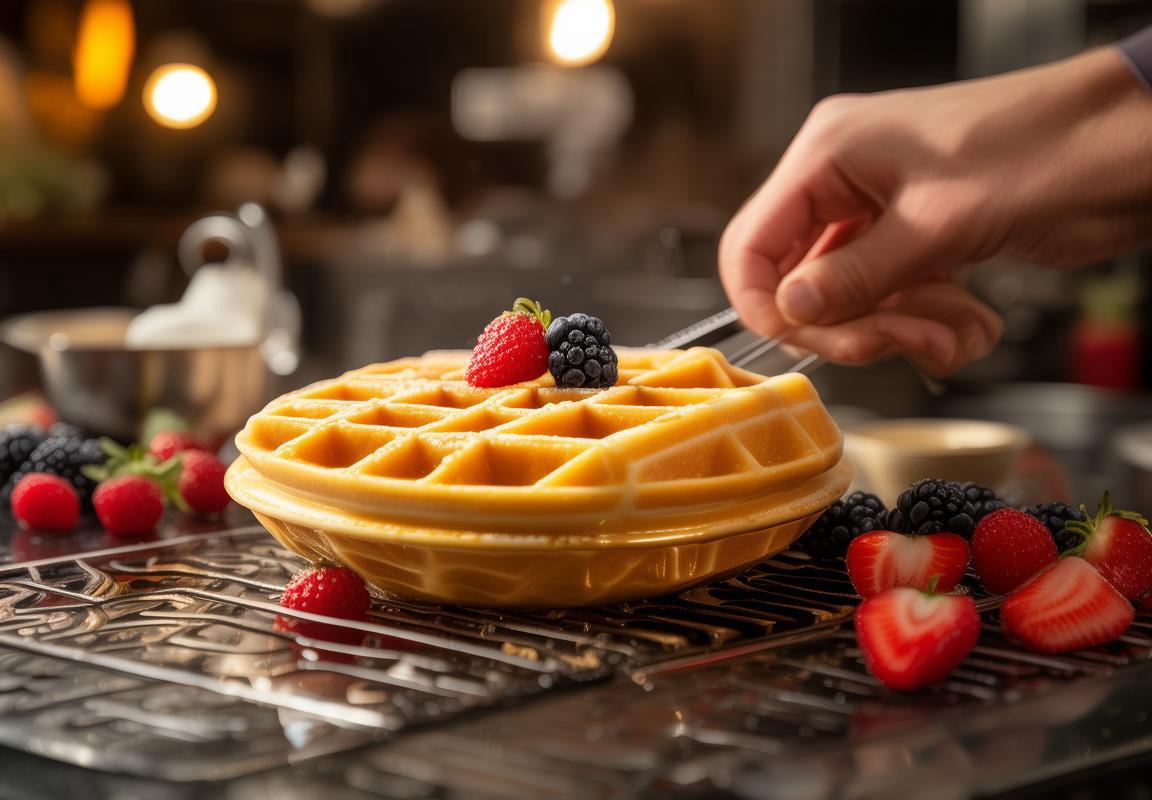
Understanding the European and American Culinary Scenes
The European culinary landscape is a tapestry woven with centuries of tradition and innovation. From the hearty stews of France to the delicate pastries of Italy, the continent boasts a rich variety of flavors and techniques. This culinary diversity has not only shaped the local diets but has also influenced the global food scene. In the United States, the culinary scene is a melting pot, reflecting the country’s history of immigration and cultural exchange. From the soul food of the South to the fusion cuisine of California, American cooking is as diverse as its population.
In Europe, the emphasis on fresh, local ingredients is deeply rooted in the continent’s gastronomic heritage. The French, for instance, are known for their love of fresh produce and their dedication to the art of cooking. The Michelin-starred restaurants in Paris and the countryside are testaments to the country’s culinary prowess. Italy, on the other hand, is famous for its regional cuisines, each with its own unique flavors and dishes. The simplicity of Italian cooking, with its emphasis on ingredients like tomatoes, olive oil, and garlic, has made it a global favorite.
The American culinary scene is marked by its adaptability and innovation. The country’s vast geography and diverse population have led to a wide array of cooking styles. The South, with its rich agricultural history, is known for dishes like gumbo and barbecue. The Midwestern states, with their fertile farmlands, contribute to the popularity of comfort foods like hot dogs and cheeseburgers. California, with its Mediterranean climate, has given rise to a cuisine that celebrates fresh, seasonal ingredients, leading to the rise of farm-to-table dining.
Both European and American culinary traditions place a strong emphasis on family meals and social gatherings. In Europe, the family dinner is often a time for sharing stories and enjoying a multi-course meal. The American tradition of hosting potlucks and barbecues reflects a similar communal spirit. These cultural practices have contributed to the popularity of appliances like the Belgian waffle maker, which can easily be used to create a communal dish that brings people together.
In Europe, the use of traditional cooking methods and regional specialties is a point of pride. From the intricate pastries of Belgium to the hearty soups of Germany, each country has its own unique culinary identity. The American culinary scene, while diverse, also has its share of iconic dishes and cooking styles, such as the New York steak or the Chicago deep-dish pizza. These dishes not only reflect the country’s culinary history but also its cultural evolution.
The European and American culinary scenes also share a common interest in food trends and innovation. Whether it’s the rise of vegetarianism in Europe or the experimentation with plant-based alternatives in the United States, both regions are at the forefront of the global food movement. This has led to a greater appreciation for high-quality kitchen appliances, including professional Belgian waffle makers, which can produce the perfect waffle to accompany a variety of dietary preferences.
In conclusion, the European and American culinary scenes are both rich and varied, each with its own unique history and cultural influences. From the traditional methods of Europe to the innovative approaches of the United States, both regions offer a world of flavors and culinary experiences. This diversity is not only a source of pride for their respective populations but also a driving force behind the popularity of kitchen appliances like the Belgian waffle maker, which brings a touch of tradition and innovation to the modern kitchen.

Why Belgian Waffles Have Become a Favourite
Belgian waffles have surged in popularity across the Western markets, capturing the hearts and taste buds of both casual home cooks and culinary enthusiasts alike. This surge in popularity can be attributed to several key factors that set them apart from other types of waffles.
One of the primary reasons for the Belgian waffle’s appeal is its distinct texture and size. Unlike American waffles, which are typically thin and crisp, Belgian waffles are thick and fluffy, with a slightly chewy exterior and a soft, airy interior. This unique consistency is a result of the leavening process, which involves a combination of yeast, baking powder, and sometimes eggs, creating a more complex and satisfying bite. The size also plays a role; Belgian waffles are larger and often have a deeper pocket, making them perfect for holding a variety of toppings, from fresh berries and whipped cream to savory fillings like bacon and cheese.
The cultural heritage of Belgian waffles is another reason for their popularity. Belgium has a rich culinary history, and its waffles are a staple in the country’s gastronomy. The waffles are often associated with fairs, festivals, and the iconic Brussels Waffle, which is a thin, crispy waffle served with powdered sugar and a dollop of whipped cream. This cultural connection has given Belgian waffles a sense of authenticity and tradition that resonates with consumers in the Western world.
In the United States, the rise of food trucks and pop-up eateries has also contributed to the popularity of Belgian waffles. These mobile food vendors often serve a variety of international dishes, and the Belgian waffle fits seamlessly into this diverse culinary landscape. Their ability to be customized with a wide range of flavors and toppings has made them a favorite among foodies and those seeking unique dining experiences.
The versatility of Belgian waffles is undeniable. They can be sweet or savory, depending on the toppings and the occasion. For breakfast, they are a classic choice, often served with fresh fruit, syrup, and whipped cream. For dessert, they can be transformed into a waffle sundae with ice cream, chocolate sauce, and nuts. For a lighter meal, they can be topped with eggs, bacon, and avocado, making them a hearty and satisfying lunch option. This adaptability has allowed Belgian waffles to transcend breakfast and become a staple in the Western diet.
Moreover, the culinary innovation in the Western markets has led to the development of a wide array of flavors and variations of Belgian waffles. From classic vanilla and chocolate to more adventurous flavors like salted caramel, maple bacon, and even savory cheese and herb combinations, there’s a Belgian waffle to suit every palate. This innovation has not only excited consumers but has also created a competitive market for high-quality waffle makers and ingredients.
The rise of health-conscious eating habits has also played a role in the popularity of Belgian waffles. While traditional waffles are often associated with a high calorie count and refined sugars, the Belgian waffle’s thicker texture means it can be more filling with less sugar. This has made them a more appealing option for those looking to indulge in a sweet treat without feeling guilty.
In addition, the ease of making Belgian waffles at home has contributed to their popularity. With the advent of high-quality, affordable waffle makers, it’s now possible for anyone to enjoy the taste of a professional-grade Belgian waffle in the comfort of their own kitchen. The convenience of being able to make a delicious breakfast or dessert whenever the craving strikes cannot be overstated.
Lastly, the marketing and branding of Belgian waffles have been quite effective. From the iconic image of the waffle iron to the variety of products and recipes available, the brand has been successfully positioned as a premium, indulgent treat. This marketing strategy has helped to create a strong association between the term “Belgian” and high-quality, delicious waffles.
In conclusion, the combination of texture, cultural heritage, versatility, innovation, health-conscious eating trends, ease of home preparation, and effective marketing has propelled Belgian waffles to the forefront of Western culinary preferences. Whether enjoyed for breakfast, dessert, or as a quick, satisfying meal, the Belgian waffle has earned its place as a favorite among food lovers worldwide.

Key Features of a Professional Belgian Waffle Machine
A professional Belgian waffle machine is a marvel of modern kitchen technology, designed to elevate the art of waffle-making to a whole new level. These machines are not just for home use; they are the go-to choice for commercial kitchens, cafes, and even high-end restaurants. Here are some key features that make these waffle machines stand out:
-
Even Heat Distribution: The most crucial feature of a professional Belgian waffle machine is its ability to distribute heat evenly across the cooking surface. This ensures that every waffle is uniformly golden brown and perfectly crisp on the outside while being soft and fluffy on the inside.
-
Adjustable Temperature Control: To cater to the varying preferences of customers, professional Belgian waffle machines often come with temperature control settings. These settings allow users to adjust the heat to their desired level, from a gentle warm to a searing hot, ensuring that each waffle is cooked to perfection.
-
Large Non-Stick Plates: These machines typically feature large, non-stick cooking plates that can accommodate a generous amount of batter. This is especially important in commercial settings where volume is key. The non-stick surface also makes it easier to release the waffles and reduces the need for butter or oil, which can be a health concern for some consumers.
-
Multiple Waffle Slots: A professional Belgian waffle machine usually has multiple slots for cooking multiple waffles at once. This feature is a game-changer for busy kitchens, allowing for the preparation of several waffles in quick succession, which is essential for maintaining a steady flow of orders.
-
Removable Plates for Easy Cleaning: To save time and effort in the kitchen, many professional machines come with removable plates. This feature makes cleaning a breeze, as you can simply take the plates out and wash them in the sink or dishwasher.
-
Sturdy Construction: These machines are built to last. They are typically made from high-quality materials that can withstand the rigors of commercial use. The construction is often robust, with heavy-duty hinges and durable surfaces that can handle high temperatures and frequent use without succumbing to wear and tear.
-
Safety Features: Professional Belgian waffle machines often include safety features like automatic shut-off, which activates if the machine is left unattended for an extended period. Some models also have cool-touch handles and surfaces to prevent burns, which is important in a busy kitchen environment.
-
Timer and Countdown Functions: To add precision to the waffle-making process, many professional machines are equipped with timers and countdown functions. This allows the operator to precisely control the cooking time, ensuring that each waffle is cooked to the right level of crispiness.
-
Versatility: While traditionally used for Belgian waffles, some professional machines can also be used to make other types of waffles or even pancakes. This versatility is a significant advantage, as it allows the kitchen staff to diversify their offerings without the need for additional equipment.
-
Easy to Use Interface: Despite their advanced features, professional Belgian waffle machines are designed with ease of use in mind. The control panels are straightforward, with clear indicators and easy-to-read displays that make operation intuitive for both beginners and seasoned chefs.
In conclusion, the key features of a professional Belgian waffle machine are what set them apart from their domestic counterparts. They are designed to handle high volumes, offer precision and control, and ensure a consistent quality in every waffle. For any kitchen that values efficiency, taste, and customer satisfaction, investing in a professional Belgian waffle machine is a smart choice.
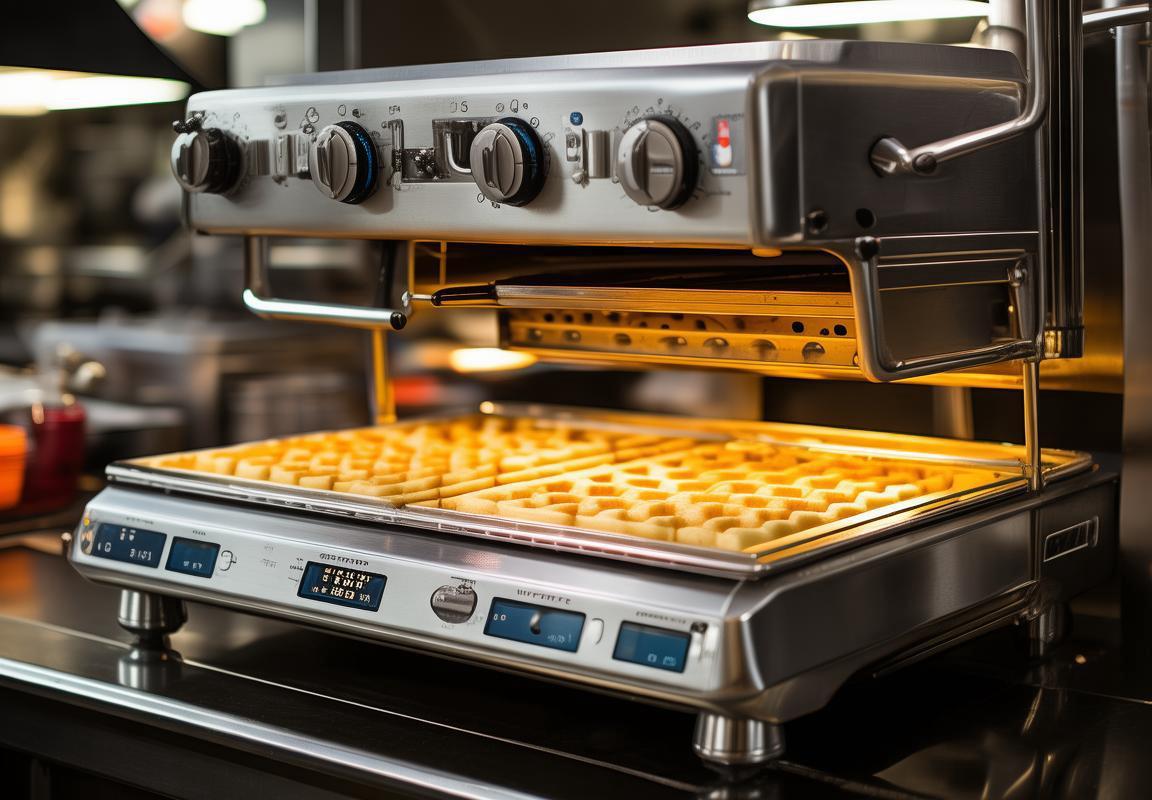
Market Trends and Consumer Preferences
The European and American culinary scenes are two of the most vibrant and diverse in the world, each with its own unique flavors and preferences that have shaped the demand for kitchen appliances, including professional Belgian waffle makers. From the streets of Paris to the backyards of Los Angeles, here’s a closer look at the trends and consumer preferences that have made Belgian waffles a favorite in both regions.
The European culinary landscape is a tapestry woven with rich traditions and contemporary innovations. Countries like Belgium, France, and the Netherlands have a long-standing love affair with waffles, which is evident in their history of waffle-making. This heritage has influenced the way European consumers view waffles, often associating them with comfort and quality. The demand for authentic Belgian waffles, with their crispy texture and deep pockets, reflects a preference for traditional recipes and craftsmanship.
In the United States, the culinary scene is a melting pot of international flavors. American consumers are increasingly seeking out global culinary experiences, which has led to a surge in the popularity of Belgian waffles. The American market has embraced the versatility of waffles, using them not just as a breakfast staple but also as a canvas for sweet and savory toppings. This adaptability has made Belgian waffles a staple in everything from food trucks to upscale restaurants.
The European market has a strong preference for high-quality, artisanal products. This extends to kitchen appliances like waffle makers, where the emphasis is often on durability and the ability to produce waffles that capture the essence of traditional recipes. The European consumer is also environmentally conscious, favoring appliances that are energy-efficient and made with sustainable materials.
In the American market, convenience plays a significant role in consumer preferences. Waffle makers that are easy to use, clean, and maintain are highly sought after. The American consumer is also price-sensitive, looking for value without compromising on quality. This demand has led to a wide range of waffle makers, from budget-friendly models to premium, high-tech appliances.
Both markets have seen a rise in the demand for waffle makers that offer customization. Consumers are looking for machines that can produce waffles of varying thicknesses and shapes, catering to personal preferences and dietary needs. The ability to make heart-shaped or mini waffles has become a feature that appeals to a wide audience, from families to individuals with special occasions in mind.
Health and wellness have become central themes in both European and American diets. This has influenced the way consumers approach their kitchen appliances, including waffle makers. There’s a growing interest in appliances that can make healthier versions of waffles, such as those that allow for the use of whole grains or low-fat ingredients. The European and American markets have also seen an increase in the demand for appliances that offer non-stick surfaces, making it easier to cook and clean with minimal oil.
The rise of social media and food influencers has had a profound impact on consumer preferences. In both Europe and the United States, there’s a strong trend towards sharing culinary creations online. Waffle makers that can produce visually stunning waffles, or those that come with features that make the cooking process more interactive, are gaining popularity. Consumers are drawn to products that can enhance their social media profiles and share their culinary skills with a wider audience.
Finally, both markets are witnessing a trend towards sustainability and ethical manufacturing. Consumers are more likely to purchase products from companies that demonstrate a commitment to social responsibility and environmental stewardship. This includes using energy-efficient appliances and sourcing materials from sustainable sources. The European and American markets are becoming increasingly discerning, with a preference for brands that align with their values.
In conclusion, the trends and consumer preferences in both European and American culinary scenes have shaped the demand for professional Belgian waffle makers. The emphasis on tradition, convenience, customization, health, and sustainability all play a role in driving the popularity of these appliances. As the culinary landscape continues to evolve, so too will the expectations and desires of consumers, influencing the direction of the waffle maker market.
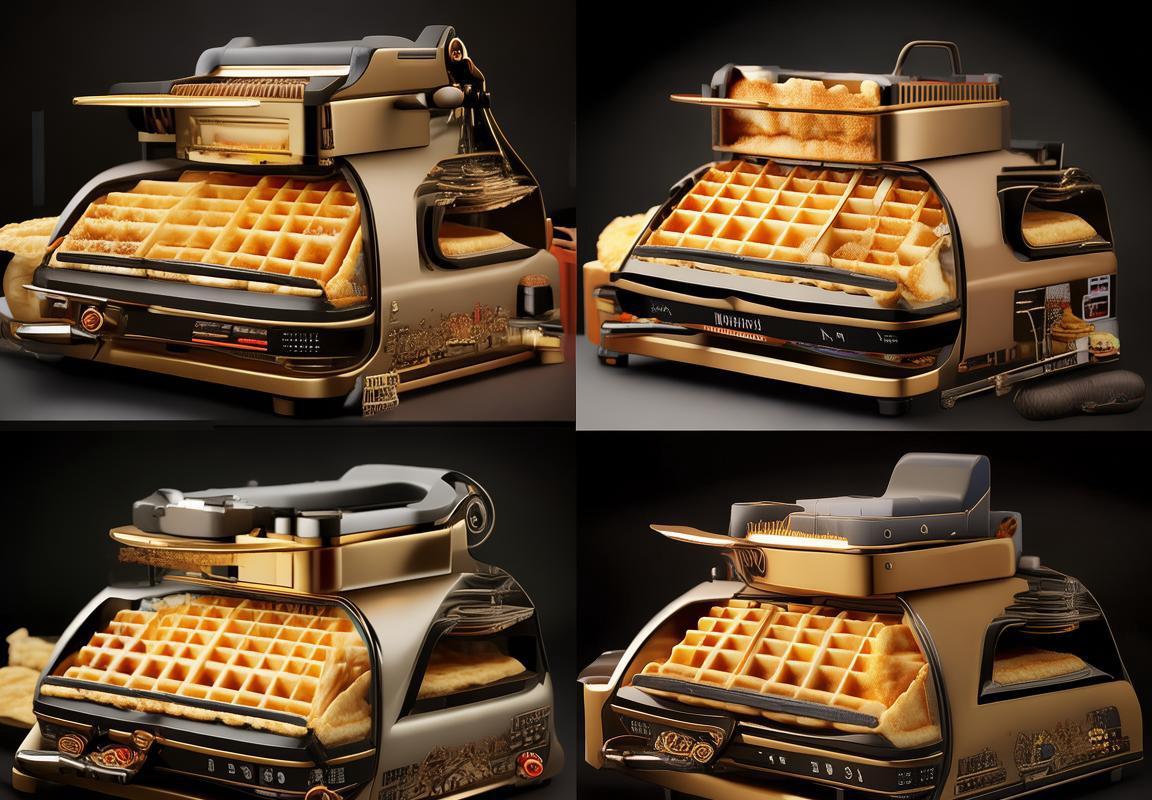
Innovations in Design and Functionality
In the world of kitchen appliances, the evolution of design and functionality is a continuous journey. This is particularly true for professional Belgian waffle makers, where innovation meets the demands of both chefs and home enthusiasts. Here are some of the key advancements that have made these machines a staple in modern kitchens.
The Shift Towards Sleek, Modern AestheticsThe aesthetic appeal of professional Belgian waffle makers has evolved significantly. Early models were often bulky and utilitarian, but today’s machines come in sleek designs that complement any kitchen decor. Materials have transitioned from stainless steel to an array of finishes like black, white, and even colors that blend into kitchen cabinets.
User-Friendly Interface and ControlsGone are the days of complicated settings and switches. Modern Belgian waffle makers now feature intuitive interfaces with digital displays or simple one-touch controls. This not only makes operation a breeze but also ensures consistent results every time, reducing the guesswork associated with making the perfect waffle.
Increased Waffle Size and VersatilityProfessional Belgian waffle makers now offer larger grids, allowing for the creation of jumbo waffles that can accommodate more toppings. Additionally, some models have adjustable settings, enabling users to craft thin or thick waffles to suit their preferences. This versatility is a game-changer for those looking to experiment with recipes or serve larger groups.
Advanced Heat Distribution and RetentionHeat distribution is crucial for waffle perfection. Modern machines often boast precise heat controls and non-stick surfaces that ensure even cooking without the need for excessive oil. The technology has improved to the point where many machines maintain a consistent temperature, which is essential for achieving the golden brown color and crispy texture that Belgian waffles are known for.
Built-in Timers and Non-Stop FunctionalityTiming is everything when it comes to waffle making, and newer models have incorporated built-in timers that signal when the waffle is done. This feature is especially valuable for those who like to multitask or for large batches. Moreover, many professional Belgian waffle makers are designed to cook non-stop, allowing users to stack waffles on top of each other without overcooking.
Eco-Friendly and Energy-EfficientWith the growing awareness of sustainability, manufacturers have focused on making their waffle makers more eco-friendly and energy-efficient. These appliances now consume less power than their predecessors, which is not only good for the environment but also helps to reduce energy bills.
Customizable Cooking PlatesSome models offer removable and interchangeable cooking plates, making it easier to clean and to customize the waffle design. For example, a heart-shaped plate could be used for Valentine’s Day or a snowflake for the holidays, adding a personal touch to every breakfast.
Safety FeaturesSafety has also been a focus of innovation. Many professional Belgian waffle makers come with safety locks to prevent the machine from operating if the lid is not properly closed. Others have cool-touch handles and surfaces, reducing the risk of burns during operation.
Wireless ConnectivityFor the tech-savvy consumer, some Belgian waffle makers now offer wireless connectivity. This allows users to control the machine remotely via an app, adjusting settings and even receiving notifications when the waffle is ready.
Maintenance and Cleaning EaseLastly, the design of these machines has made maintenance and cleaning a breeze. Non-stick surfaces are more common, and many models come with self-cleaning cycles or features that make the process quicker and less labor-intensive.
The advancements in design and functionality of professional Belgian waffle makers reflect a commitment to user convenience, culinary excellence, and sustainability. As the market continues to evolve, we can expect to see even more innovative features that enhance the waffle-making experience.
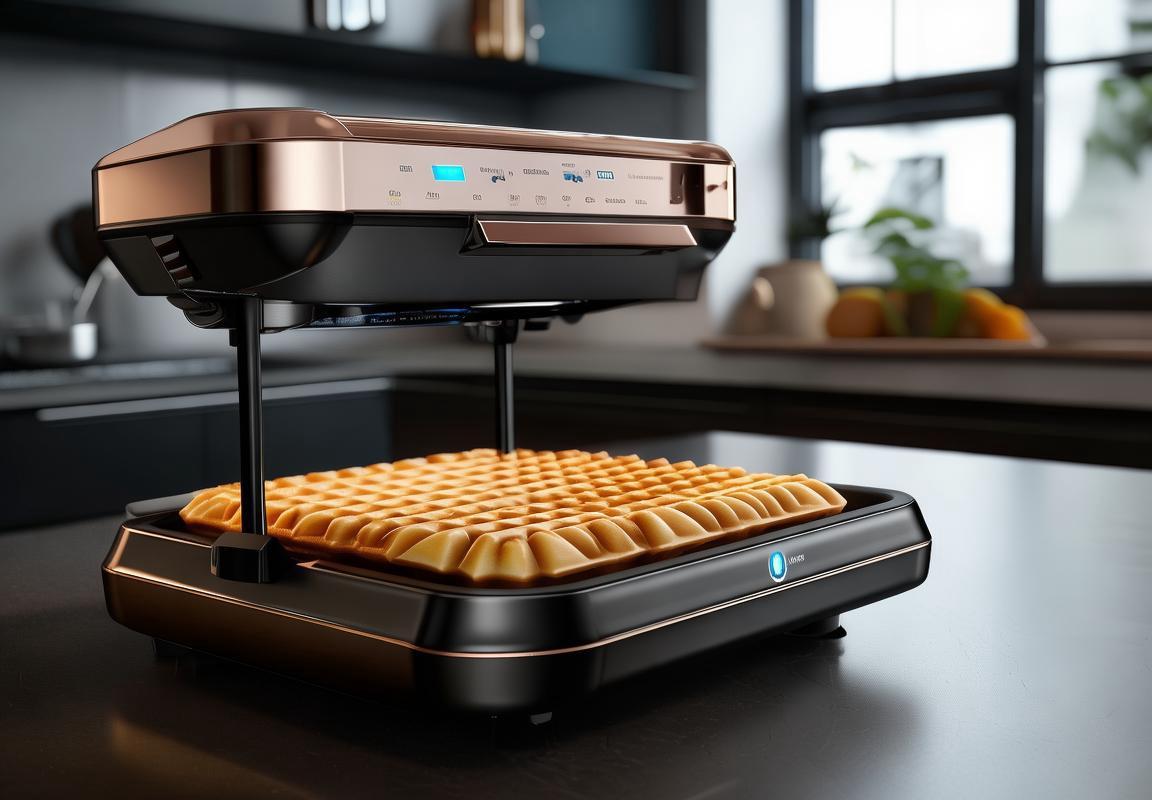
Comparative Analysis: Belgian Waffle Makers vs. Traditional Waffle Makers
In the world of waffle-making, the debate between Belgian waffle makers and traditional waffle makers has been a spirited one. Each type of machine offers unique qualities and serves different culinary needs. Let’s delve into the comparative analysis of these two popular waffle-making devices.
The Belgian waffle maker, with its deep pockets and intricate patterns, is often seen as the gourmet’s choice. It’s not just about the visual appeal; the Belgian waffle is known for its fluffy, airy texture and the ability to hold a variety of toppings, from fresh berries to chocolate sauce. On the other hand, traditional waffle makers, with their simpler, square grids, are more common in homes and often associated with the classic, sweet, syrup-soaked waffle that is a staple of American breakfasts.
Size and CapacityBelgian waffle makers are typically larger and heavier than their traditional counterparts. This is due to the need for a wider, deeper plate to accommodate the larger, more intricate design of the Belgian waffle. This size difference also means that Belgian waffle makers often have a greater capacity, allowing for the production of multiple waffles at once. For those who enjoy hosting or preparing waffles for a crowd, this is a significant advantage.
Design and PatternThe design of a Belgian waffle maker is what sets it apart. The grids are deeper and the pattern more pronounced, which contributes to the waffle’s unique texture. The grid design on a traditional waffle maker is generally simpler, often square or diamond-shaped, and the waffles are thinner and flatter. The Belgian waffle’s pattern is not just for show; it creates a network of pockets that can hold more syrup, making it perfect for a variety of toppings.
Temperature and Cooking TimeBelgian waffle makers are designed to cook waffles at a higher temperature, which helps achieve that perfect golden brown color and crispy texture. The cooking time is also longer compared to traditional waffle makers, as the heat needs to penetrate the deep pockets. Traditional waffle makers, while still capable of producing delicious waffles, may cook them a bit faster due to their simpler design and thinner waffles.
Ease of UseWhen it comes to ease of use, both types of waffle makers have their pros and cons. Belgian waffle makers often come with features like non-stick surfaces and automatic shut-off, making them user-friendly. However, their larger size can make them less portable and more challenging to store. Traditional waffle makers are usually more compact and easier to transport, but they may require more attention to ensure even cooking.
MaintenanceMaintenance is another area where the two types of waffle makers differ. Belgian waffle makers may require more frequent cleaning due to the depth of the grids and the potential for syrup and other toppings to drip into the crevices. Traditional waffle makers, with their simpler design, are often easier to clean. However, both can be cleaned with a damp cloth and gentle cleaning agents.
VersatilityThe versatility of a waffle maker is a key consideration for many consumers. Belgian waffle makers are not just for breakfast; they can be used to make a variety of recipes, from savory waffles with cheese and herbs to dessert waffles with nuts and chocolate. Traditional waffle makers are more limited in their use but are perfect for the classic sweet waffle that is a staple of many American breakfast tables.
In conclusion, the choice between a Belgian waffle maker and a traditional waffle maker depends on personal preference and culinary needs. If you’re looking for a gourmet experience with the ability to hold a variety of toppings, a Belgian waffle maker is the way to go. If you prefer something simpler, easier to use, and more compact, a traditional waffle maker might be more suitable. Both have their place in the kitchen, and the decision ultimately comes down to what you value most in your waffle-making experience.
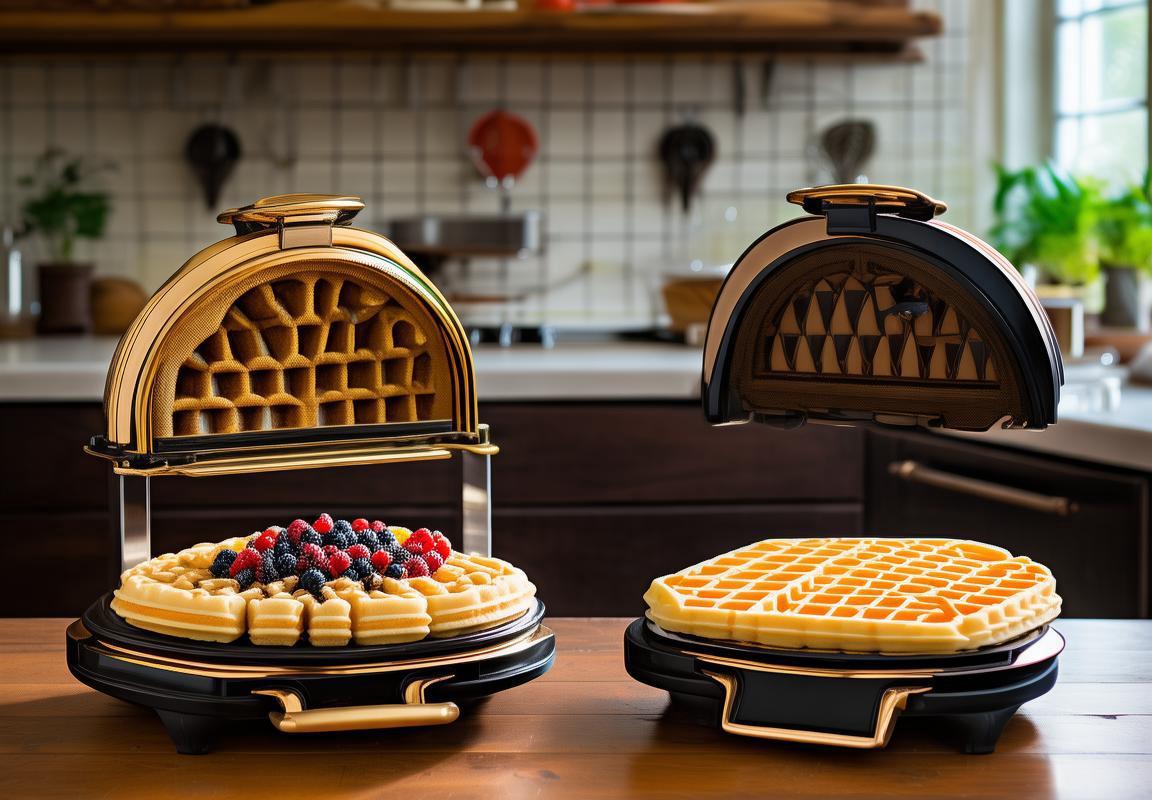
Impact of Professional Belgian Waffle Machines on Commercial Kitchens
The professional Belgian waffle machine has transformed commercial kitchens, introducing a level of precision and efficiency that traditional waffle irons simply can’t match. Here’s how these machines have left their mark:
In the heart of bustling cafes and busy restaurants, the once humble waffle has become a star attraction. The introduction of the professional Belgian waffle machine has not only elevated the quality of the final product but also changed the way chefs approach their craft.
These machines are designed with durability in mind, boasting robust construction and components that can withstand the rigors of a commercial kitchen environment. Unlike home appliances, professional models are built to last, with heavy-duty frames and high-quality materials that ensure years of reliable service.
One of the standout features of professional Belgian waffle machines is their even heat distribution. The grids are designed to cook the waffles thoroughly without burning or leaving cold spots. This evenness is crucial for creating that perfect balance of crisp edges and a tender, fluffy interior that has become synonymous with the Belgian waffle experience.
Commercial kitchens are all about speed and efficiency, and the professional Belgian waffle machine delivers on both counts. With quick preheat times and the ability to cook multiple waffles at once, these machines are a game-changer for busy establishments. Chefs can serve a steady stream of fresh waffles without any downtime, ensuring a smooth and continuous workflow.
Hygiene is a top priority in commercial kitchens, and professional waffle machines often come with features that make cleaning a breeze. Non-stick surfaces and removable grids simplify the process, reducing the risk of food particles getting trapped and causing bacteria to grow. This not only keeps the kitchen clean but also contributes to a safer food preparation environment.
Another significant impact of these machines is the versatility they bring to the menu. While traditional waffles are typically square and dense, Belgian waffles have a larger surface area and a lighter texture. This opens up a world of possibilities for toppings and fillings, from classic butter and maple syrup to fruit compotes, whipped cream, and even savory options like ham and cheese.
The commercial Belgian waffle machine has also played a role in the rise of breakfast and brunch trends. As these meals have become more elaborate and gourmet, chefs are looking for innovative ways to impress their customers. The ability to offer unique and indulgent waffles has become a selling point for many eateries, helping them to stand out in a competitive market.
Moreover, the scalability of professional Belgian waffle machines is impressive. Whether a kitchen is small or large, there’s a model that can fit the bill. For high-volume operations, some machines can even be stacked or used in a conveyor belt setup, maximizing space and output.
In terms of energy efficiency, professional Belgian waffle machines have also made strides. Modern models are designed to consume less power while still maintaining high performance. This not only reduces operating costs but also aligns with the growing demand for eco-friendly practices in commercial kitchens.
The integration of technology has also had a profound impact. Some professional Belgian waffle machines now come with digital controls that allow chefs to precisely set and maintain the desired temperature. This level of control ensures consistency in every waffle, a critical factor for maintaining a high standard of quality across all servings.
In conclusion, the impact of professional Belgian waffle machines on commercial kitchens cannot be overstated. They have revolutionized the way waffles are made, offering chefs the tools to create high-quality, consistent, and innovative dishes. As consumer tastes evolve and demand for unique culinary experiences grows, these machines are poised to remain a cornerstone in the commercial kitchen landscape.
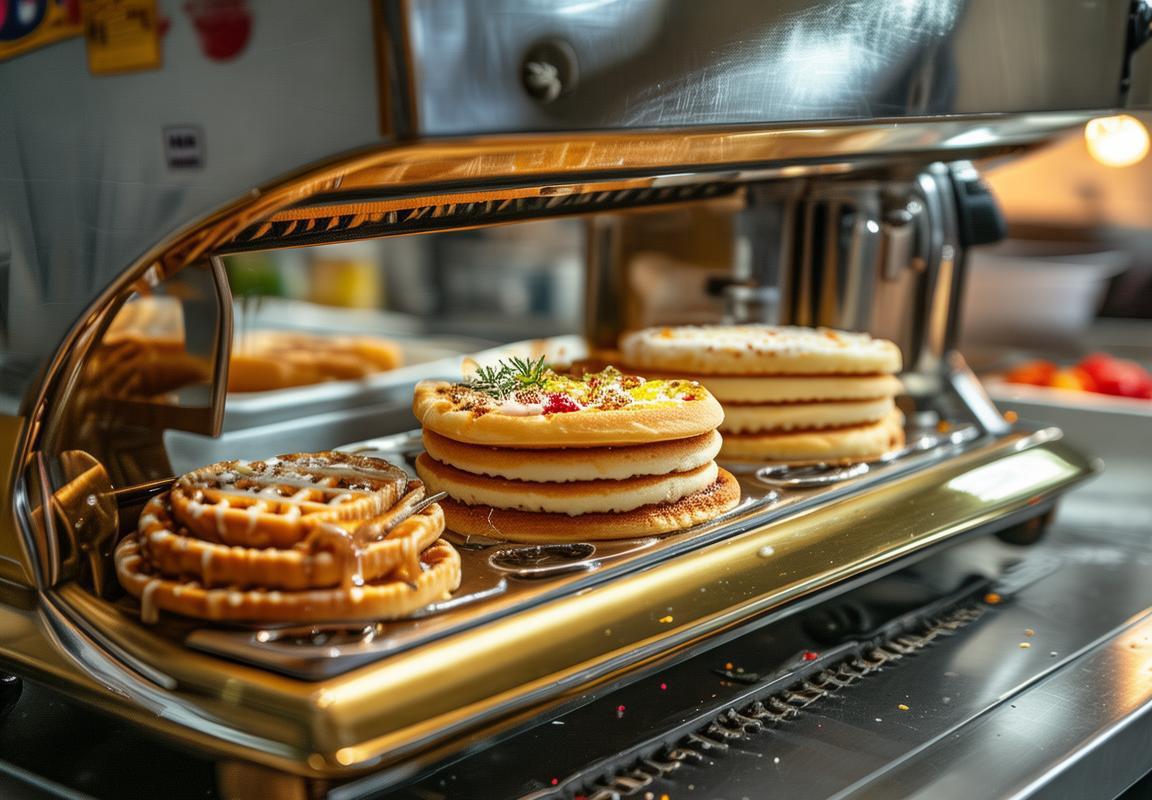
Consumer Insights and Market Growth Projections
The Belgian waffle’s popularity has surged in the Western markets, and it’s not just a fleeting trend. This delectable breakfast staple has managed to carve a niche for itself, thanks to its unique texture and rich flavor profile. Its golden-brown, crispy exterior and chewy interior have captured the hearts and taste buds of consumers across Europe and America. The allure of Belgian waffles lies in their versatility; they can be enjoyed plain, with butter and syrup, or dressed up with fresh fruits, whipped cream, and chocolate sauce.
The rise of the health-conscious consumer has also played a significant role in the waffle’s popularity. Belgian waffles, with their lighter batter and airy texture, are perceived as a healthier alternative to traditional American waffles, which are often denser and heavier. This perception has helped Belgian waffles gain a foothold in the health-focused market segment.
In the European culinary scene, the influence of Belgian culture is undeniable. The country’s rich culinary heritage has a profound impact on the food landscape, and Belgian waffles are a prime example of this. In countries like Belgium, the Netherlands, and the UK, these waffles are a staple at breakfast tables and in cafes, often enjoyed with a cup of coffee or a glass of fruit juice.
In the United States, the Americanization of the Belgian waffle has created a whole new market. The waffles are often larger, with a more pronounced grid pattern, and they’re often associated with breakfast buffets and brunches. The American version has also seen a surge in popularity at food festivals and street fairs, where they’re often served as a sweet treat.
The rise of Belgian waffles in the Western markets is also a testament to the power of social media. Instagram, in particular, has been a platform where food enthusiasts and influencers showcase their waffle creations. The visually appealing nature of these waffles makes them perfect for social media, and this has helped drive consumer interest and demand.
In terms of ingredients, the quality of the batter is crucial. Belgian waffles are traditionally made with eggs, milk, flour, sugar, and vanilla extract, and the quality of these ingredients can significantly impact the final product. The use of high-quality vanilla extract and fresh, pure ingredients has become a hallmark of premium Belgian waffle brands.
The versatility of Belgian waffles extends beyond breakfast. They can be enjoyed as a dessert, a snack, or even a meal. This adaptability has made them a favorite among foodies and casual eaters alike. Whether it’s a simple waffle with fresh berries or a gourmet creation with a variety of toppings, the possibilities are endless.
The growth of the gluten-free market has also contributed to the popularity of Belgian waffles. As more people become aware of gluten intolerance and celiac disease, gluten-free versions of popular foods have become increasingly sought after. Belgian waffles have been adapted to cater to this segment, offering a delicious alternative for those who cannot consume gluten.
The rise of the convenience market has also had an impact. Consumers are looking for quick and easy ways to enjoy their favorite foods, and Belgian waffles fit the bill perfectly. With the availability of pre-made Belgian waffle mix and single-serve packs, it’s never been easier to make a delicious waffle at home.
In terms of the market, the demand for Belgian waffles has seen a steady increase over the years. This growth is expected to continue, driven by the increasing popularity of breakfast and brunch culture, the rise of health-conscious consumers, and the convenience of the product.
The use of technology in the production of Belgian waffles has also played a role in their popularity. Modern waffle machines are designed to provide consistent results, ensuring that every waffle is as delicious as the last. The ability to control temperature and batter consistency has made the process more efficient and the end product more reliable.
The global reach of the Belgian waffle is further evidence of its popularity. From the streets of Paris to the beaches of California, Belgian waffles are a beloved treat. This international appeal has helped to solidify their status as a favorite among food enthusiasts worldwide.
In conclusion, the rise of Belgian waffles in the Western markets is a multifaceted phenomenon. It’s driven by the unique characteristics of the waffle itself, the evolving culinary preferences of consumers, and the power of social media. As long as there’s a demand for a delicious, versatile, and visually appealing breakfast and dessert option, the Belgian waffle will continue to be a favorite in the Western culinary landscape.
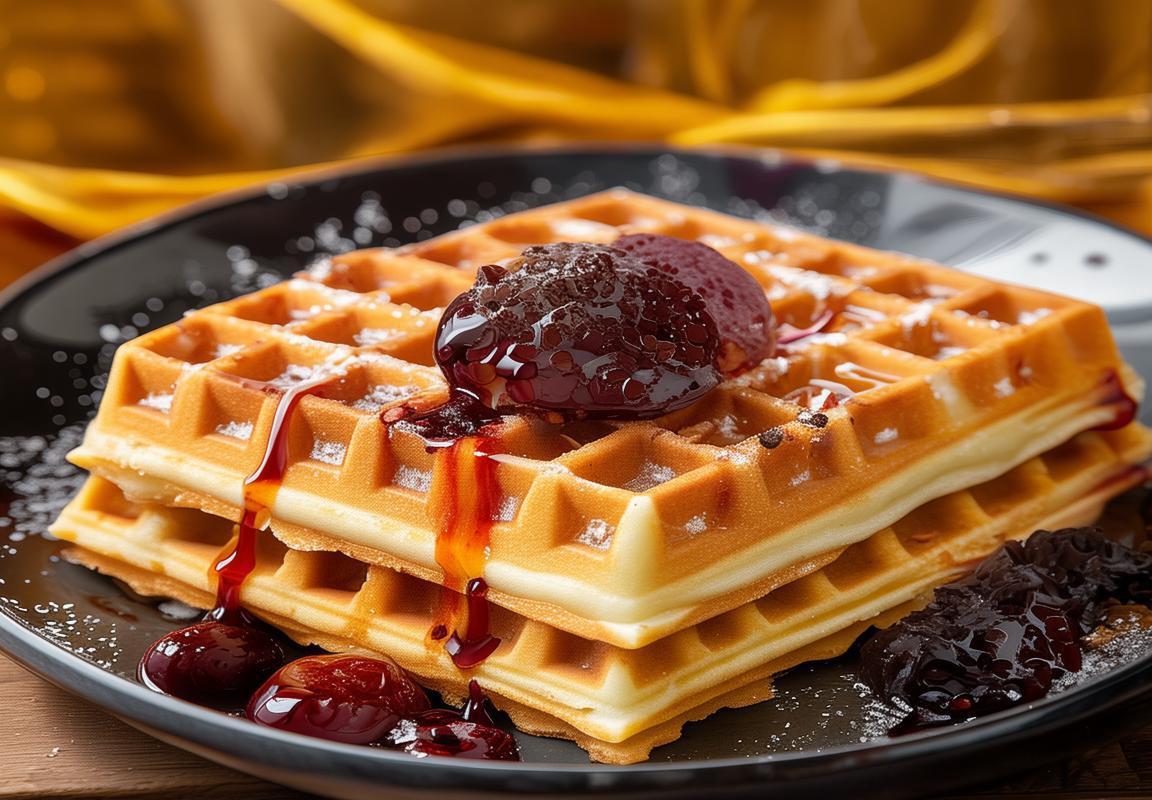
The Future of Belgian Waffle Makers in the Global Kitchen
The evolution of the Belgian waffle maker has been a testament to the ever-growing demand for unique and indulgent breakfast options. As these machines have gained popularity, they’ve not only become a staple in home kitchens but have also left a significant mark on the commercial culinary landscape. Let’s delve into the impact of professional Belgian waffle machines on commercial kitchens.
In commercial settings, the ability to offer a diverse range of menu items is crucial for attracting and retaining customers. Belgian waffle machines have introduced a level of variety that was once unattainable with traditional waffle irons. Their larger size and intricate patterns have allowed chefs and bakers to create visually stunning and delectable waffles that stand out on the menu.
The versatility of professional Belgian waffle machines is undeniable. They can handle a variety of mixtures, from classic Belgian waffles to sweet and savory creations. This adaptability has led to their integration into not just breakfast menus but also as a unique dessert option. The ability to customize toppings and fillings has opened up a world of possibilities for chefs looking to offer a personalized dining experience.
One of the key advantages of these machines is their consistency. In a commercial kitchen, where time is of the essence, the ability to produce high-quality waffles time after time is invaluable. Professional Belgian waffle machines are designed to maintain a consistent temperature and batter consistency, ensuring that every waffle meets the same high standard of quality.
The commercial Belgian waffle machines also contribute to efficiency in the kitchen. Their larger capacity allows for the production of multiple waffles simultaneously, reducing wait times for customers and streamlining the workflow. This efficiency is particularly beneficial during peak hours when every minute counts.
Moreover, the aesthetic appeal of Belgian waffles cannot be overlooked. Their intricate patterns and golden-brown color are visually appealing, making them a centerpiece on any plate. This visual appeal extends to the presentation, as chefs can get creative with toppings and garnishes, enhancing the overall dining experience.
The impact of these machines is not limited to breakfast or dessert menus. They have also found their way into brunch menus, where a mix of sweet and savory options can cater to a wide range of tastes. This flexibility has allowed restaurants to extend their hours and attract a broader customer base.
In terms of sustainability, professional Belgian waffle machines are often designed with energy efficiency in mind. With the increasing focus on eco-friendly practices in the food service industry, these machines can help reduce energy consumption without compromising on performance.
The integration of Belgian waffle machines into commercial kitchens has also sparked a wave of innovation in the industry. Chefs and bakers are experimenting with different ingredients and techniques, pushing the boundaries of what a waffle can be. This innovation has led to the creation of new flavors and textures, keeping the waffle trend fresh and exciting.
From a consumer perspective, the availability of Belgian waffles in commercial settings has significantly influenced their popularity. Customers who may have only experienced waffles at home or during special occasions now have access to them regularly, which has only served to deepen their appreciation for this unique treat.
The rise of social media has also played a role in the popularity of Belgian waffles in commercial kitchens. The visually appealing nature of these waffles makes them perfect for Instagram posts and other social media platforms, which can drive foot traffic to restaurants and cafes.
Looking ahead, the future of Belgian waffle machines in the global kitchen seems bright. As consumer preferences continue to evolve, there will likely be a greater emphasis on customization and health-conscious options. Professional machines may adapt to include features that allow for healthier ingredients and alternative flours, catering to a more health-conscious consumer base.
The rise of gluten-free and vegan diets has also opened up new markets for Belgian waffle machines. As these machines become more versatile, they can accommodate a wider range of dietary restrictions, making them an essential tool for any kitchen looking to cater to diverse needs.
In conclusion, the impact of professional Belgian waffle machines on commercial kitchens has been profound. They have introduced a new level of variety, efficiency, and visual appeal to the culinary landscape. As the industry continues to innovate and adapt to changing consumer preferences, it’s clear that the Belgian waffle machine will remain a staple in kitchens around the world.